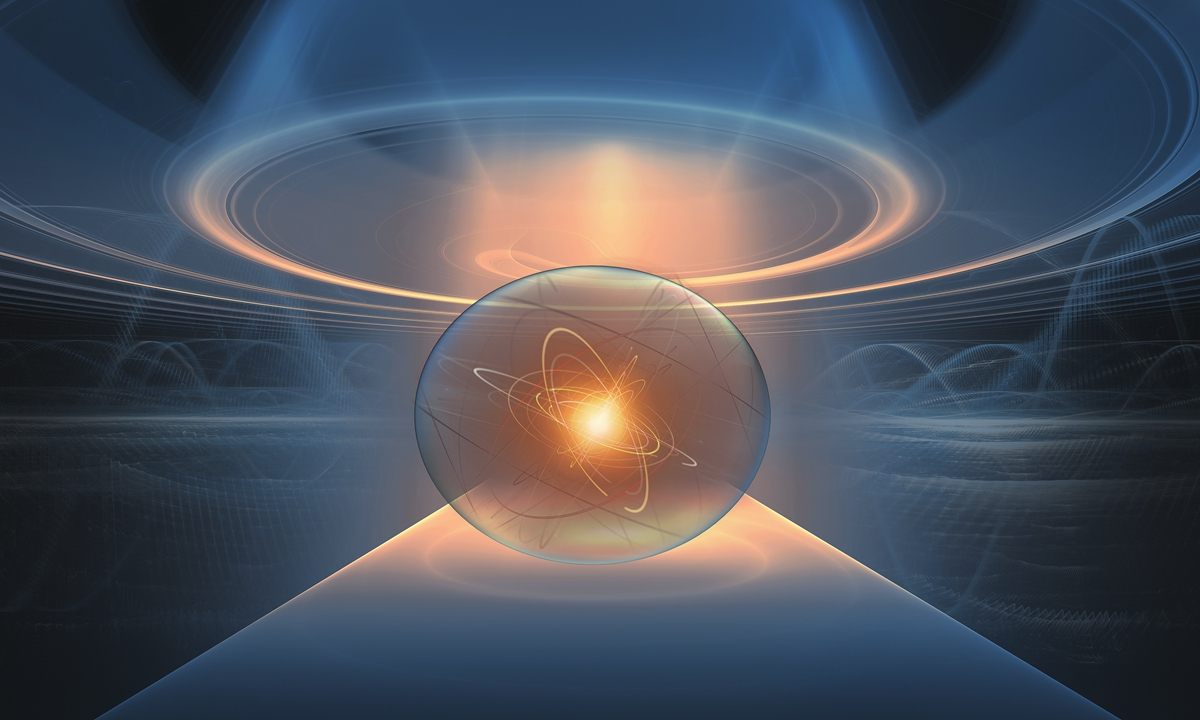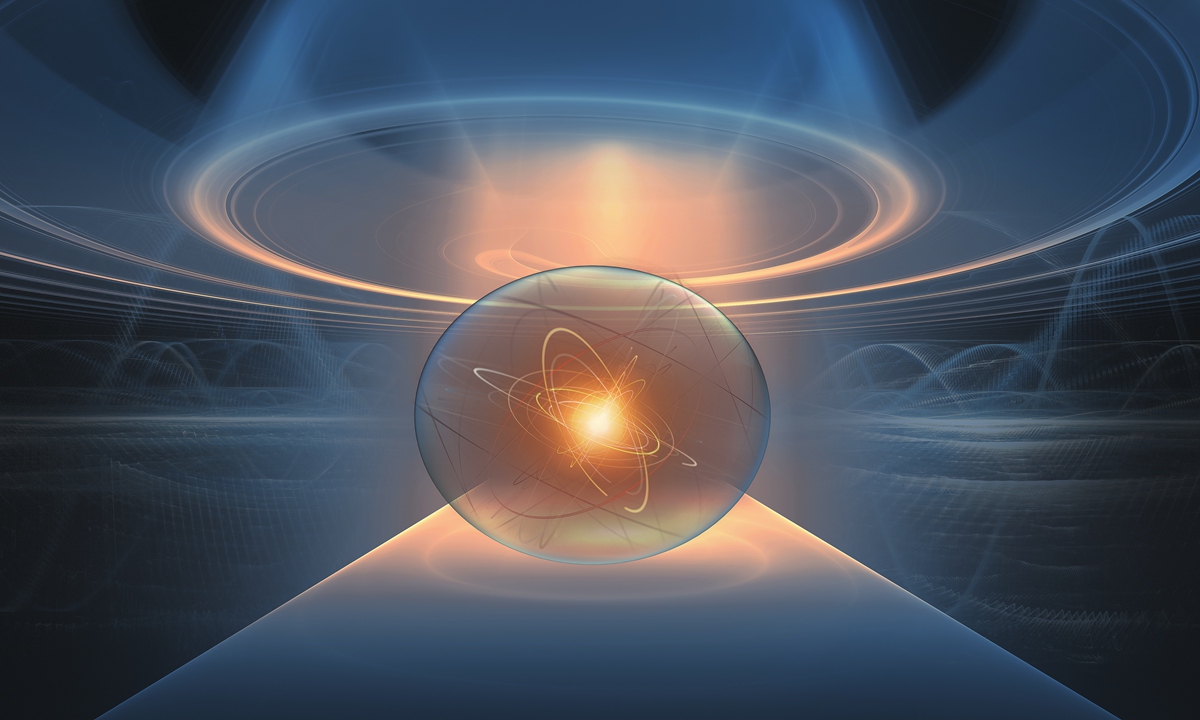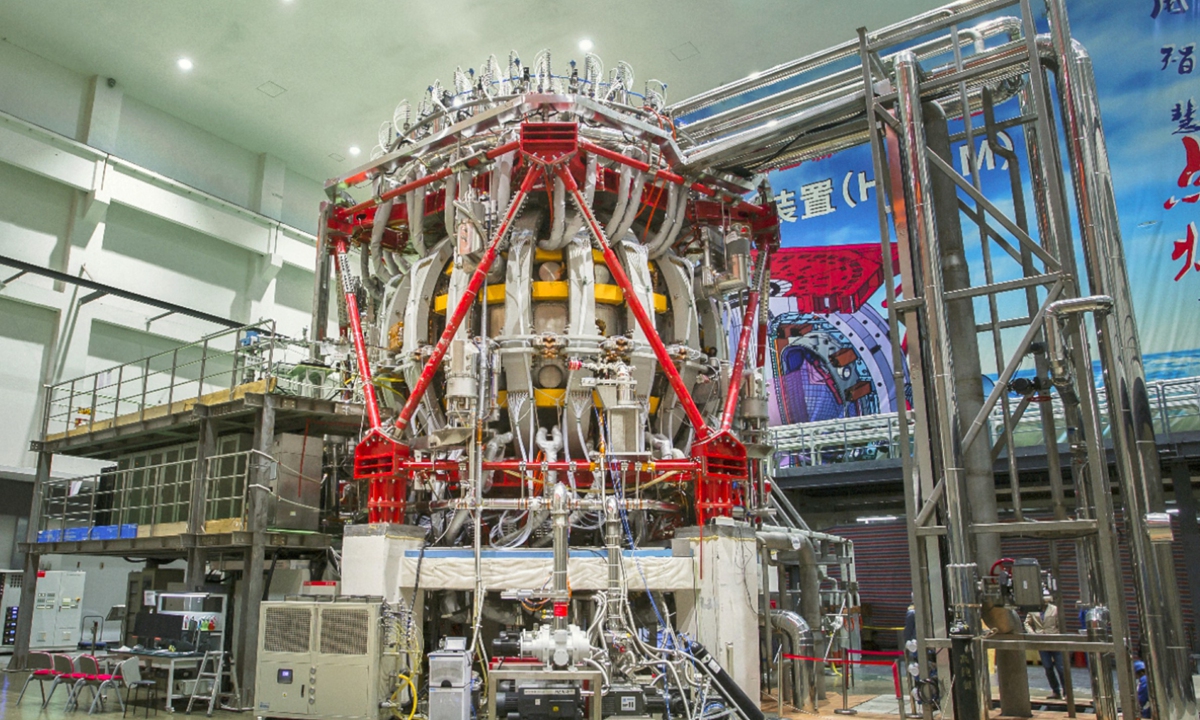US’ breakthrough in nuclear fusion targets at ‘nuclear weapon research, but far from practical use’

Photo: VCG
A major US scientific breakthrough in nuclear fusion, the first time anyone has achieved the phenomenon known as fusion ignition, creating a nuclear reaction that generates more energy than it consumes, is believed by Chinese experts to aim at developing nuclear weapons, but its effectiveness and efficiency awaits improvement for practical use.The US Department of Energy (DOE) announced on Tuesday that a team from the Lawrence Livermore National Laboratory (LLNL) conducted the first controlled fusion experiment in history at the laboratory's National Ignition Facility (NIF) on December 5, paving the way for advancements in national defense and the future of clean power.
According to the US DOE, the experiment reached a milestone, also known as scientific energy breakeven, meaning it produced more energy from fusion than the laser energy used to drive it. LLNL's experiment surpassed the fusion threshold by delivering 2.05 megajoules of energy to the target, resulting in 3.15 megajoules of fusion energy output, demonstrating for the first time a most fundamental scientific basis for inertial fusion energy.
According to Du Xiangwan, an academician of the Chinese Academy of Engineering who specializes in applied nuclear physics, strong laser technology and energy strategy, the experiment was supposed to achieve a higher gain, but it only turned out to be a small "net energy gain" that was achieved.
According to Du, the controlled fusion experiment can be understood as a target containing thermonuclear materials induced by lasers to generate nuclear fusion.
In order to realize the net energy gain of 1.1 megajoules, the US scientists used a laser system as large as a soccer pitch to emit 192 laser beams to a pea-sized fuel pellet to create the fusion ignition, a relatively huge cost compared with the overall low efficiency.
Du pointed out that the success of the experiment is still far from the goal of controlled nuclear fusion for commercial use, and it was not supposed to be designed as a commercial energy installation. The laser-controlled fusion experiment carried out by the US aims at studies on the physical science associated with nuclear weapons, Du said, noting that China is also conducting laser nuclear fusion research.
The experiment marks an advance, realizing the laser-induced nuclear fusion with energy output surpassing energy input, but it has a long way to go to realize high energy gain, Du said.
Compared with the US' controlled fusion induced by lasers, the international thermonuclear experimental reactor (ITER), also known as the world's largest "artificial sun" that China has participated in the development, adopted a completely different technical route of a superconducting tokamak, which adopts magnetic confinement fusion, according to Du.
Apart from the world's largest fusion reactor ITER located in France, China also has its own tokamak reactors in Hefei, East China's Anhui Province and Chengdu, Southwest China's Sichuan Province to carry out experiments on energy created by controlled nuclear fusion, Du noted.
The mainstream view in academic circles is that the tokamak devices are more promising to realize controlled fusion for commercial use, Du said.
In terms of the key technical barriers for controlled fusion to be put into practical use, Du said there is no barrier in principle for humankind to realize this vision.
"We have seen technological breakthroughs toward this goal in recent years. As for how long it will take to achieve this goal, some industry experts think it will take another 20 to 30 years. I think it may take a little longer, but it can be realized within this century," Du said.


